SA State Budget 2025-26: Labor puts law and order at top of the list
SA Police look set to be one of the biggest winners from this year’s state budget as the Treasurer reveals his third surplus – and our new debt outlook.
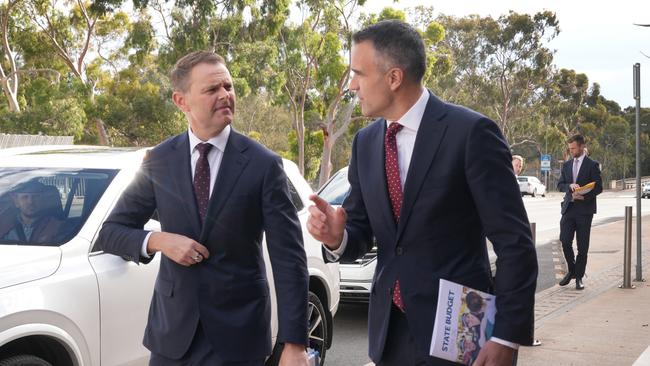
SA News
Don't miss out on the headlines from SA News. Followed categories will be added to My News.
Treasurer Stephen Mullighan gets tough on law and order in a fourth state budget sprinkled with cost-of-living relief and dominated by debt ballooning to $48.495bn by 2028-2029.
While the Treasurer claimed the state’s debt projection “compared really favourably to other states” he admitted the government was unlikely to make a significant repayment dent until the costly Torrens to Darlington road and new Women’s and Children’s Hospital were delivered.
The only major new infrastructure project announced in the budget would help take trucks off the South Eastern Freeway, Portrush Road and Cross Roads after the State Government promised $125m toward the $656.3m project.
It would fund upgrades between the South Eastern Freeway and the Sturt Highway over 10 years as stage one of the much lobbied for High Productivity Vehicle Network.
Cost of living relief included a package for school kids to pay 25c per trip for public transport through a $10, 28-day pass and extending the $200 slashed from school materials and services bills for another four years.
Mr Mullighan said the key education measures supporting parents of more than 120,000 school aged kids would save a South Australian family with two school-aged children $884 a year – or $1084 if they access sports vouchers.
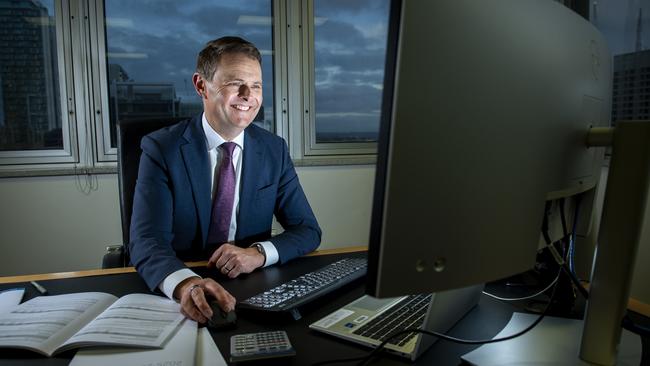
Law and order was the budget centrepiece with Mr Mullighan, who is also the police and corrections minister, claiming the $395.1m package was the largest boost to police funding in the state’s history.
There was $172m in the kitty over six years to add 326 officers to the force by 2030-2031 to reach “a record target of 5000 sworn officers”.
While $29.6m over three years would expand the police security officers model.
“The police security officers will be deployed to regional areas, meaning there will be more sworn police out on the beat in regional communities,” Mr Mullighan said.
He said the law and order funding ensured “crime doesn’t become a problem in our community like it has in other jurisdictions.”
More road safety cameras to detect and fine motorists using mobile phones or jumping red lights would be installed with Mr Mullighan saying “the revenue we receive from cameras will be ploughed back into the roads”.
Whyalla would continue to test the purse strings.
Mr Mullighan said the $650m state government contribution to the $2.4bn Whyalla steelworks and mine rescue package could be extended.
Another $192m each from the state and federal governments was set aside in case the administration process readying the struggling business for sale took another six months.
Administrators had not expected the “steelworks to be so run down, poorly maintained and poorly stocked” and getting the plant “up to speed” for a buyer had taken longer than expected,” Mr Mullighan said.
“But we’re not banking on it taking another six months.”
The Whyalla package and $73.4m drought support for farmers facing devastating conditions were draining the projected $201m budget surplus for this financial year to $18m.
But Mr Mullighan was confident this surplus would hit $179m next financial year.
Revenue was boosted by the state’s strong property market with a lift from land tax, stamp duty payments along with a larger boost from goods and services tax.
Health continued to take its mammoth share of the budget with $1.9bn in new spending over five years to meet growing demand including $42.9m over four years to help keep older people out of hospital beds.
Mr Mullighan said “we are throwing everything at our health system” with new beds, nurses, doctors and ambulance officers “and we will have an extra 330 beds by the end of the year”.
A Geriatric Outreach Service and Patient Support initiative to help get older patients into residential aged care facilities was funded with $42.9m over four years.
“(This would help stop older people) languishing in a hospital bed rather than being in a more appropriate aged care facility,” Mr Mullighan said.
The horrendous algal bloom off the coast of South Australia that has devastated marine life was addressed with $44.4m over four years to replace a coastal research vessel.
Another $14m goes toward the continued replenishing of Adelaide’s coastal beaches “particularly after recent storm events” dragged vital beach sand from shorelines.
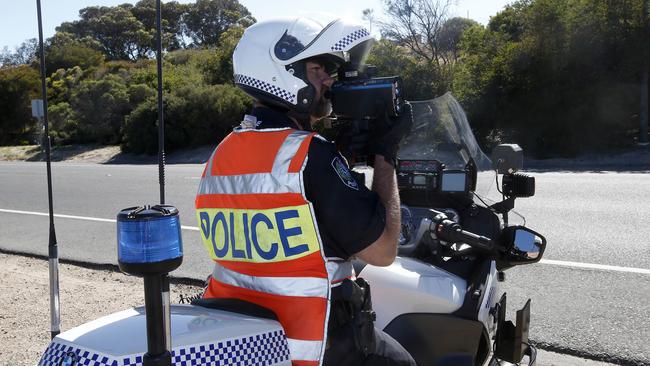
New mobile phone cameras to hit SA roads
By Belinda Willis
South Australians can expect a deluge of new cameras nabbing motorists on their mobile phones and jumping red lights as the State Government ploughs another $46.8m into road safety.
Treasurer Stephen Mullighan unveiled the new safety camera funding as part of his centrepiece $395.1m to target crime and safety in Thursday’s State Budget.
He listed new mobile phone detection cameras, red-light speed cameras and point-to-point cameras targeting heavy vehicles on the South Eastern Freeway as key investments.
The money made in fines from motorists would be “ploughed back” into road and heavy vehicle rest area upgrades.
“And to reinforce the message that the road toll must come down, there will be $4.5m dedicated to new targeted road safety campaigns,” Mr Mullighan said.
“Before the Easter long weekend, I stood with Sergeant John Hong to plead with motorists and road users to be safe on our roads.
“Sergeant Hong has not only lost a loved one from road trauma, he has spent most of his policing career with the task of informing families their loved one has lost their life on the road.”
While Mr Mullighan claimed crime rates had fallen across the state, he said the State Government wanted “to make sure SA doesn’t fall into the problems that we’ve seen in other states and territories” by making police, courts and crime front and centre of the budget.
There was $172m over six years to get another 243 police numbers on the beat by 2028-2029 and another 83 by 2030-2031.
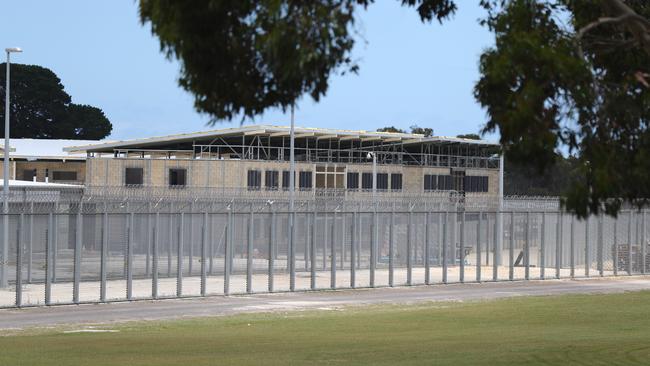
Mr Mullighan lauded the move as building the state’s largest force with a record 5000 sworn officers.
Another $29.6m over three years would add 98 police security officers across regional Australia.
The funds come on top of already announced funds to replace SA police officer pistols and to double the number of motorcycle officers to 66.
“We are providing SA Police the funding for more personnel, better facilities and new equipment, so they are better resourced to perform their duties,” Mr Mullighan said.
He said the budget also tackled courts and justice.
Another $72.4m would add 116 beds to the state’s prison system and an extra $862,000 over five years was expected to increase the number of hearings and reports coming from the state’s Parole Board.
Funding of $5.5m over four years would provide more resources to Forensic Science SA for testing and interpretation.
While 19 more beds were headed to Mount Gambier Prison and there was also the already announced $6.8m funding for tougher security to be installed across SA prisons.
Mr Mullighan said $8.1m would help build a 30-bed Bail Accommodation Support Program to support Closing the Gap targets.
Participants would be supported by case management designed to help them find longer-term housing, maintain community links and reduce recidivism.
South Australia’s Health budget nudges $10bn spend
By Brad Crouch
The Health and Wellbeing budget scrapes in just under $10bn at $9.99bn, with $1.9bn in new spending over five years, but will swell to almost $10.5bn over the next three years.
However, this does not factor in chronic blowouts in the portfolio.
Health spending blew out by $740m in the 2024-25 budget, while the Auditor General says health overspent by $874m then $956m in the previous two years, or 11 per cent a year.
The combined total overspend is almost the equivalent cost of the $2.6bn Royal Adelaide Hospital.
Health accounts for almost one-third of the entire budget, and is more than double the next largest agency of Education on $4.66bn.
The 2025-26 health budget includes:
$117m to support growing demand for mental health services, with 72 mental health beds across three new rehabilitation units at the Queen Elizabeth Hospital, Modbury and Noarlunga hospitals to open soon;
$77m in partnership with the federal government to support establishment of a statewide cancer network to maximise prevention, early detection and care;
$45m for the new Mount Barker Hospital;
$42.9m with the federal government to help move older people out of hospital beds and into more suitable residential aged care places;
$13.9m to expand the mental health co-responder program to cover all of Adelaide, where mental health experts ride on police calls to find the best options for mental health call-outs;
$8m to remove and replace aluminium composite cladding and upgrade fire protection systems at the Women’s and Children’s Hospital;
$8m with the federal government to support aged care infrastructure upgrades at Bordertown;
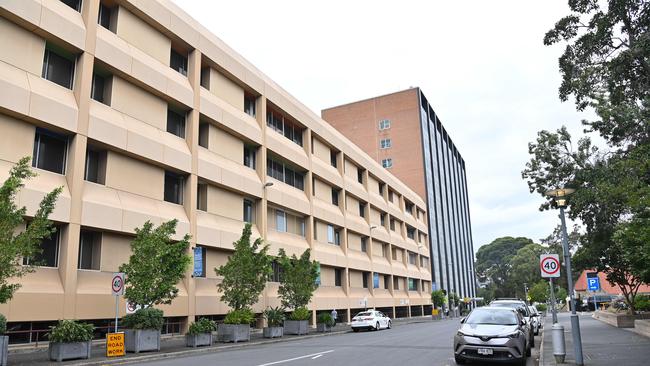
$7.3m to improve efficiency at SACAT hearings to assist in timely discharge of patients from hospitals to residential aged care facilities;
$2.2m to expand the medical conditions pharmacists can treat so fewer people have to go to GPs or hospitals.
Treasurer Stephen Mullighan said the latest funding boost means across four budgets the government has delivered $9bn in additional funding for health.
“The government continues to make important investments in our health system so we can meet increasing demand,” he said.
“We are hiring more staff, building more beds and creating new models of care.”
Health Minister Chris Picton said: “We are opening 600 new hospital beds across the system and hiring thousands more health workers.
“Since being elected we’ve recruited an additional 1462 nurses, 646 doctors, 385 allied health workers and 301 ambos above attrition.
“We’re also investing heavily in mental health services. In coming months we will open 72 additional mental health beds across three brand new mental health wards in the north, south and west of Adelaide.”
At 1.30pm on Thursday, metropolitan hospitals were treating 353 people in an ED system with a combined capacity of 333, with ambulances ramped.
Families win in cost of living budget splash
By Lauren Novak
Families with two children catching public transport to school and playing sport or a musical instrument could save more than $1000 a year under changes aimed at easing the cost of living.
The state government has slashed the cost of student bus, train or tram multi-day passes and extended discount on public school fees and extracurricular activities.
From July, students using a 28-day MetroCard will pay $10, down from $28.60 – or $242 less per year.
Premier Peter Malinauskas said the $20.7m policy meant “a child catching the bus or train to school each day will pay the equivalent of a 25c fare”.
An annual $200 discount on the materials and services charge for every student at public primary and secondary schools will also continue for another four years, at a total cost of $96m.
And a program offering families $200 towards the cost of a child taking part in sports or music activities will continue.
The combined savings for families with two children will be up to $1084 a year.
Treasurer Stephen Mullighan hoped the public transport fare cut would encourage more students to switch their commute from the family car to public transport and “make it easier for parents and caregivers to get to work and stay at work, rather than be interrupted by the school run”.
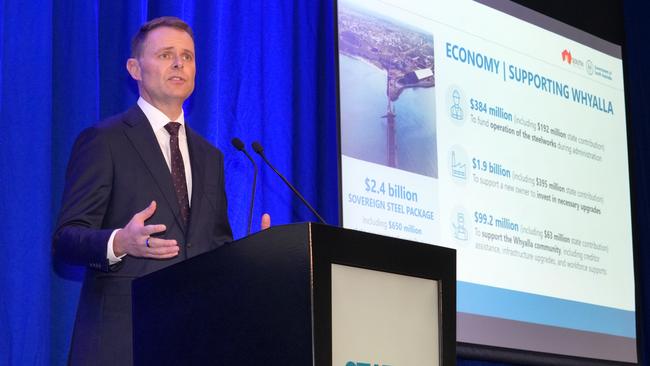
Mr Mullighan has also committed hundreds of millions of dollars to help more South Australians break into the housing market.
More than $400m will go to construction projects forecast to deliver more than 4600 homes across three developments at Onkaparinga Heights, Southwark Grounds (20 per cent affordable housing) and Playford Alive East (30 per cent affordable housing).
Another $135.1m in joint state and federal funding will go towards social housing in the second round of the Housing Australia Future Fund.
More renters will get the chance to own a home under a new rent-to-buy affordable housing initiative.
At least 100 properties currently under construction will come under the scheme, which will enable eligible applicants to pay 75 per cent of the market rent for a property for up to three years and then buy that property at a locked-in price.
“We are doing everything we can to address the housing crisis and help more South Australians find a place to live,” Mr Mullighan said.
Business owners are also set for some relief through a $20m fund offering grants of $2500 to $75,000 to invest in more energy efficient equipment and cut power costs.
Early start to preschool starts early
By Shashi Baltutis
More than 2000 three-year-olds will start preschool next year as the state government fast tracks a program to offer every young South Australian an earlier education.
The $1.9bn rollout of three-year-old preschool was brought forward from 2027 with $27.7m in funding over four years to prepare sites for the move.
Previously, most children started kindergarten at four-years-old.
The new, younger students would commence at more than 200 long daycare settings and 45 public kindergartens next year.
Delivering three-year-old preschool was described by Education Minister Blair Boyer as “the biggest reform to early childhood education our state has ever seen”.
The announcement followed $715m over five years allocated in the 2024 state budget to phase in the delivery of three-year-old preschool at all sites by 2032.
Treasurer Stephen Mullighan said the start of three-year-old preschool in 2026 would provide students with “the best chance to succeed”.
Some three-year-olds, including Aboriginal children and kids in state care, are already in preschool.
To assist with the delivery of the initiative, $178m in state government loans will be made available for infrastructure projects at private preschools.
The expansion of the state government scheme will allow stand-alone private preschools to be allocated up to $10m from the new funding.
Previously, a preschool campus had to be co-located with a primary or secondary school to be considered for loans.
Also announced in the budget was a new $70m birth to year 6 school in Adelaide’s north, to meet population growth in the area, which could be funded by a partnership between the private and public sectors.
The state government floated the idea of the rent-to-buy scheme for the new build, involving private funding for construction of the school, which would be operated by the Education Department.
This model could also be applied to a $155.3m high school for the northern suburbs and a $62.7m primary and preschool at Mt Barker, both announced last year.
In the past, the state government had funded Riverbanks College, which opened in 2023 Aldinga Payinthi College the year prior, through public private partnerships.
Other initiatives included $40m over four years on airconditioning and other upgrades at a range of primary and preschools across the state.
About $50m was allocated over four years to give schools more support for students with disabilities and $48.3m over three years was put towards secondary pupils at risk of disengaging from their learning.
The state budget announcements were bolstered by an agreement signed with the federal government which would provide an additional $1.25bn over the next 10 years.
It would bring public schools in SA to 100 per cent of the schooling resource standard by 2034, which outlined funding needed to meet educational needs and lift outcomes.
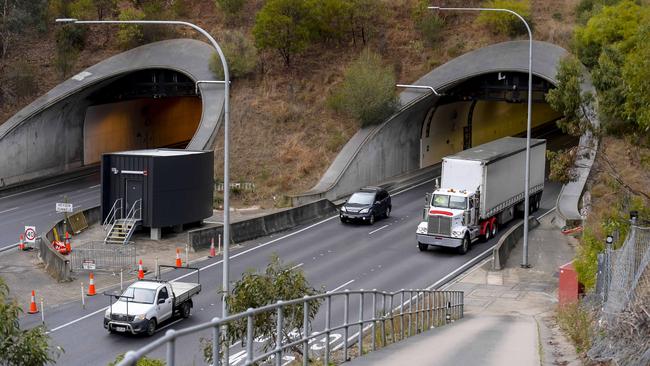
$125m for Adelaide freight bypass
By Erin Jones
A $125m commitment for a long-awaited freight truck bypass around Adelaide has been unveiled as one of the state government’s key infrastructure priorities in 2025-26.
The funding commitment was for stage one of the High Productivity Vehicle Network, which will deliver the Greater Adelaide Freight Bypass.
The investment was one of the government’s new major transport infrastructure projects next financial year, which also included $250m to remove the Curtis Road level crossing.
The bypass was expected to divert about 420,000 trucks a year away from the South Eastern Freeway, between Murray Bridge and Adelaide, and was previously costed at $1bn.
In March, the federal government committed $525m over 10 years towards the project and at the time had expected a 50:50 funding split.
Treasurer Stephen Mullighan said the government had “gratefully” accepted the federal offer and had matched it on an 80:20 funding basis.
“I don’t think it’s fair that South Australian taxpayers are expected to pay proportionally more for a regional freight project when QLD taxpayers are offered 80 per cent funding of a $7bn regional road project (the Bruce Hwy),” Mr Mullighan said.
“So that’s the case we’ve made to the Commonwealth, which is consistent with the federal Coalition, consistent with the state liberal party and consistent with our federal members of parliament and we’re up for that discussion.”
The project includes duplication of the Swanport Bridge, near Murray Bridge, an upgrade of the Monarto interchange and new overtaking lanes between Monarto and the Sturt Highway.
Mr Mullighan while the $656m budget may not deliver all the improvements of a $1bn project it “certainly delivers significant improvements to increase safety and freight efficiency”.
“If the federal government wants to make this an 80:20 project of a full $1bn plus budget for it, we’re absolutely up for that and we’ll increase our funding share commensurately,” he said.
Adelaide Hills residents will also benefit from $12.5m to implement the Mount Barker On-Demand Keoride trial into a permanent Adelaide Metro service and for six new electric buses.
The largest infrastructure project in the state’s history - the $15bn North-South Corridor - has had $2.2bn committed to it in 2025-26.
More Coverage
Originally published as SA State Budget 2025-26: Labor puts law and order at top of the list





